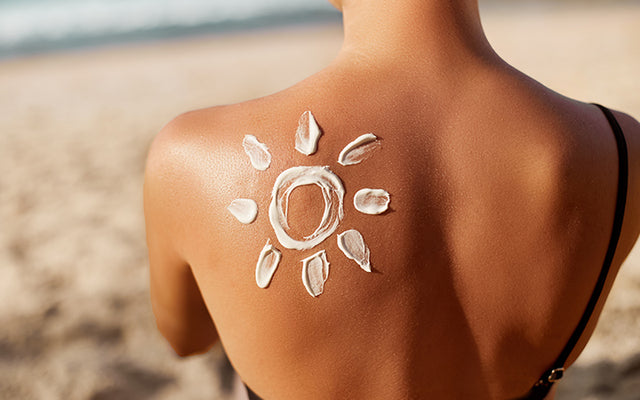
Using sunblock is very important for every skin type, but if you have oily skin, you need to be extra careful when choosing one. Oily skin can become greasy and shiny quickly, especially during the summer season. A wrong product can make the skin feel heavy, clog pores, and cause breakouts. That is why choosing the best sunblock for oily skin is very important.
This article will help you understand what kind of sunblock works best for oily skin and what to look for when buying one. It will also explain how to use sunblock properly for the best results.
Why Oily Skin Needs Special Sunblock
Oily skin produces more natural oils than other skin types. This can cause the face to look shiny and feel greasy. When regular sunblocks are applied, they often make the skin look more oily. Some even cause pimples or blackheads.
Using the right sunblock can protect your skin from harmful sun rays and also help control oil. It will keep your face fresh and clean while also giving strong protection from UV rays.
What to Look for in Sunblock for Oily Skin
Here are some simple things to look for when choosing a sunblock for oily skin:
Oil free formula
Choose a sunblock that is oil free. It will not add extra oil to your skin. This helps avoid breakouts and keeps the skin fresh.
Non comedogenic
This means the product will not block your pores. Blocked pores can cause acne, which is a common problem with oily skin.
Matte finish
Sunblocks with a matte finish do not leave a shiny layer on the skin. They absorb excess oil and help reduce shine.
Light texture
Gel based or water based sunblocks are better for oily skin. They feel light and get absorbed quickly.
Broad spectrum protection
Make sure the sunblock protects against both UVA and UVB rays. This helps prevent sunburn, skin aging, and dark spots.
SPF rating
A sunblock with SPF 30 or higher is good for oily skin. Higher SPF gives better protection when you are outdoors.
Best Ingredients for Oily Skin Sunblock
Some ingredients work better for oily skin. Look for these when reading the label:
Zinc oxide
This mineral helps control oil and also protects the skin from sun damage.
Titanium dioxide
This is another mineral that gives sun protection without causing breakouts.
Niacinamide
This helps control oil and soothes irritated skin.
Silica
This helps absorb excess oil and gives a smooth look to the skin.
How to Apply Sunblock on Oily Skin
Even the best sunblock will not work well if not used properly. Follow these steps for best results:
Clean your face first
Wash your face with a gentle cleanser made for oily skin. This will remove oil, sweat, and dirt.
Pat your skin dry
Use a clean towel to gently dry your face. Do not rub hard.
Apply sunblock
Take a small amount and apply it evenly on your face, neck, and ears. Use your fingers to gently rub it in.
Let it absorb
Wait a few minutes before going outside or applying makeup. This helps the sunblock work better.
Reapply every few hours
If you are staying outside, reapply every two to three hours. This keeps the protection strong.
Benefits of Using the Right Sunblock for Oily Skin
Using a suitable sunblock can improve your skin health in many ways:
Controls oil
A good sunblock will reduce excess oil on the face.
Prevents acne
It keeps your pores clean and avoids breakouts.
Protects from UV damage
Stops sunburn, dark spots, and early aging signs.
Improves skin texture
Regular use helps skin look smoother and cleaner.
Works well with makeup
Light sunblocks can be used under makeup without making the skin look greasy.
Common Mistakes to Avoid
People with oily skin sometimes make mistakes when using sunblock. Avoid these for better results:
Skipping sunblock
Some people think oily skin does not need sunblock. This is not true. Sun protection is important for all skin types.
Using body sunblock on the face
Face skin is more sensitive. Always use sunblock made for the face.
Applying too much
Using a thick layer can clog pores. Apply a small but enough amount.
Not reapplying
Sunblock wears off after a few hours. Reapply regularly, especially if you sweat a lot.
Using expired products
Old sunblock can lose its effect. Always check the expiry date.
Daily Routine for Oily Skin with Sunblock
To get the most benefit, include sunblock in your daily routine. Here is a simple plan:
Morning
Wash your face with a cleanser. Use a toner if needed. Apply a light oil free moisturizer. Then apply sunblock and wait a few minutes before going outside.
During the day
If you are outdoors, reapply sunblock every two to three hours. You can use a sunblock powder or spray if you wear makeup.
Evening
Wash your face properly. Remove all sunblock and makeup. Use a mild moisturizer for oily skin.
Tips to Choose the Best Sunblock for You
Everyone’s skin is different. Here are a few final tips to help you pick the best sunblock:
-
Try small samples before buying the full product
-
See how your skin feels after a few hours
-
Check for any reaction or new breakouts
-
Choose a product that suits your climate
-
Ask a skin expert if you have sensitive skin or acne
Conclusion
Choosing the best sunblock for oily skin can protect your skin and improve its health. It should be oil free, light, and offer broad protection from sun rays. With the right sunblock and a simple routine, oily skin can stay fresh, clear, and safe from sun damage. Use it daily and enjoy healthy skin in every season.
Comments on “Best Sunblock for Oily Skin That Protects Without Greasiness”